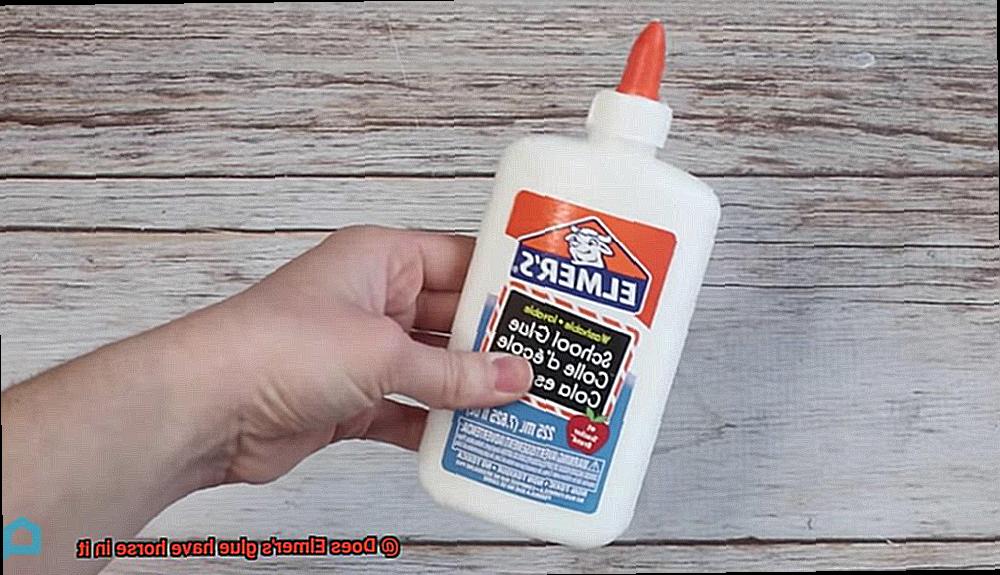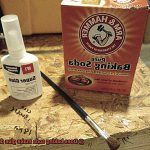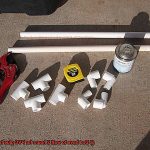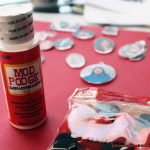Remember Elmer’s Glue? That stuff we all used for arts and crafts back in the day? Well, turns out it can do more than just stick paper together. If you’re wondering whether Elmer’s Glue can work its magic on glass, you’ve come to the right place.
Elmer’s Glue is that classic white bottle with the orange cap that brings back memories of elementary school art class. It’s easy to use, dries clear, and can bond all sorts of materials together. But what about glass? Can this trusty glue handle such a smooth and slippery surface?
The answer is yes, but with a few things to keep in mind. Elmer’s Glue isn’t specifically designed for glass-to-glass bonding, but it can still get the job done if you follow some simple steps. First off, make sure your glass surface is squeaky clean – no dust or greasy fingerprints allowed. Just give it a quick wipe down with a damp cloth and let it dry completely.
To improve the bonding strength, consider roughening up the surface slightly with sandpaper or a glass etching solution. This will give the glue something to grip onto and create a stronger bond.

When applying the glue, go for a thin and even layer. You don’t want globs of glue ruining your project’s appearance. Once applied, press the pieces firmly together for enough time to let the glue set and create a solid bond. The drying time can vary depending on which type of Elmer’s Glue you’re using – anywhere from a few minutes to several hours.
Now, let’s be real here – Elmer’s Glue might not be your go-to option for heavy-duty glass projects or items that will be exposed to water or extreme temperatures. In those cases, it’s better to opt for specialized glass adhesive or epoxy specifically made for glass-to-glass bonding.
So, to sum it all up, Elmer’s Glue can work on glass, but how well it works depends on your project and the precautions you take. It’s always a good idea to consider the specific needs of your glass item before grabbing that trusty white bottle.
What is Elmer’s Glue?
Contents
In the world of adhesives, one name reigns supreme – Elmer’s Glue. Created by the ingenious R.H. Elmer in the late 1940s, this adhesive has captured the hearts of crafters, artists, and students alike. Join us on a journey as we unravel the secrets behind Elmer’s Glue, exploring its versatility, unique properties, and boundless creative possibilities.
Versatility: From Liquid Gold to Solid Magic
Elmer’s Glue comes in various forms, each designed to cater to specific crafting needs. Liquid glue, glue sticks, and glue pens offer a wide range of options for precise application on surfaces like paper, fabric, wood, and cardboard. With Elmer’s Glue, your imagination knows no bounds.
Drying Clear: The Vanishing Act of Perfection
The true enchantment of Elmer’s Glue lies in its ability to dry clear. Like a magician’s trick, this adhesive disappears into thin air once it dries. No residue or unsightly marks left behind. Whether you’re creating delicate paper crafts or restoring a wooden masterpiece, Elmer’s Glue ensures a seamless and professional finish that will leave your audience spellbound.
Safety First: A Non-Toxic Potion of Creativity
Elmer’s Glue is not just a magical adhesive; it’s also safe for use by children. Tested and certified for its non-toxic nature, this glue is a trusted companion for young crafters. However, remember to follow the instructions on the packaging and keep it away from curious eyes or any open wounds – after all, even magic has its limits.
Beyond Bonding: Unleashing the Power of Possibilities
Elmer’s Glue is not your average adhesive; it’s a versatile tool that can do so much more. Imagine it as a sealant, guarding your creations against the ravages of moisture. Picture it as a primer, preparing surfaces for a masterpiece in the making. But always remember, before diving headfirst into the unknown, test a small area to ensure compatibility and achieve the desired results.
What Types of Materials Does Elmer’s Glue Work On?
Elmer’s glue, a beloved adhesive found in countless homes and classrooms, possesses a magical ability to unite various materials. With just a few dabs, this remarkable glue can create sturdy connections that stand the test of time. But what exactly are the materials that Elmer’s glue can effectively bond? Let’s embark on a journey through the marvelous world of Elmer’s glue and explore its versatile applications.
Paper and Cardboard – An Unbreakable Union:
Elmer’s glue shares an intimate friendship with paper and cardboard. When applied to these porous materials, the glue eagerly seeps in, akin to thirsty roots absorbing water from the earth. As it dries, it forms an unbreakable bond, ensuring that your paper crafts and cardboard structures remain intact with unwavering strength.
Fabric – Stitch-Free Sewing:
When you find yourself without needle and thread, fear not. Elmer’s glue emerges as the ultimate lifesaver for fabric projects. It glides effortlessly onto fabric, penetrating its tiny fibers and creating a bond that endures numerous washes. Whether you’re hemming pants or fashioning a fabric collage, Elmer’s glue serves as your trusty companion in seam-free sewing adventures.
Wood – The Carpenter’s Ally:
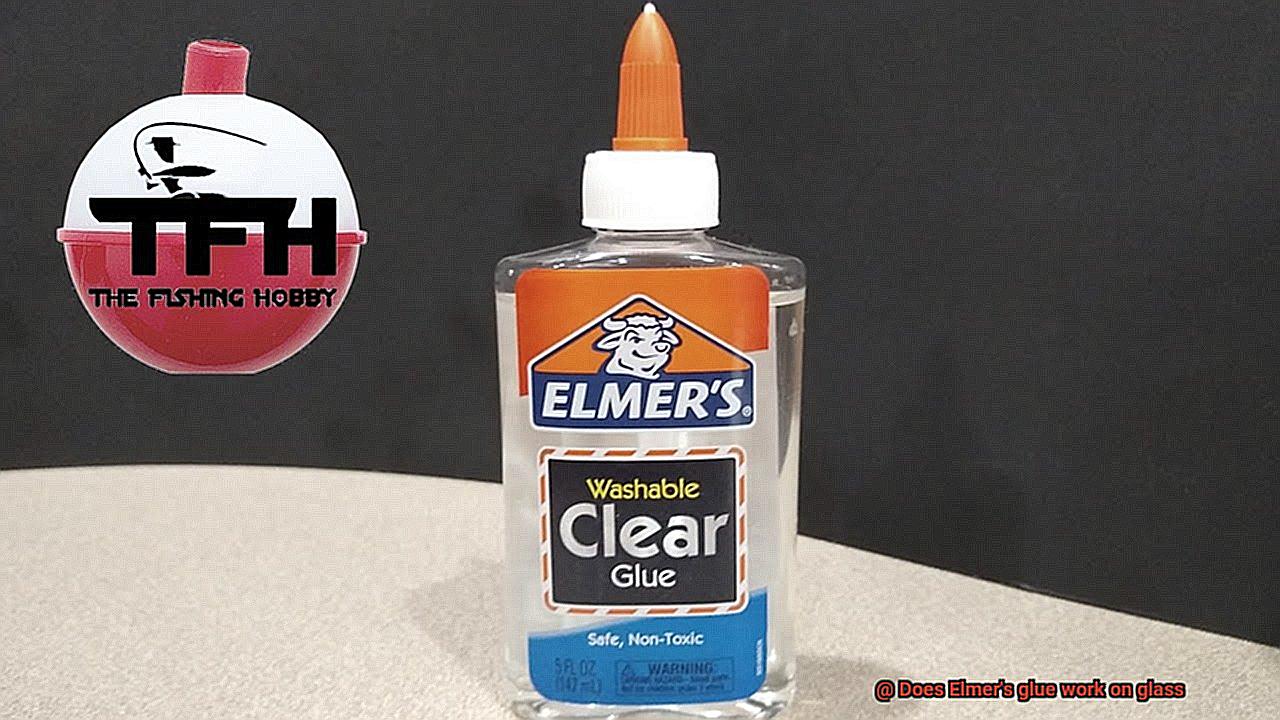
Elmer’s glue extends its adhesive prowess beyond arts and crafts to woodworking projects. A reliable companion for carpenters, Elmer’s wood glue delves into the very pores of wood, forging an unyielding connection that defies the passage of time. From constructing model houses to repairing broken furniture, Elmer’s wood glue stands as a steadfast ally.
Ceramics – Crafty Pottery:
For pottery enthusiasts and ceramic crafters alike, Elmer’s glue unveils itself as the secret ingredient for success. It temporarily holds ceramic pieces together while you channel your artistic magic, readily washing away when it’s time to fire the piece in the kiln. It’s important to remember that Elmer’s glue is not suitable for permanently bonding ceramics.
Foam Board – Lightness and Strength:
Foam board, that lightweight and versatile material, adores Elmer’s glue. Its water-based formula does not weigh down the foam but still establishes a robust bond that keeps your foam board creations intact. Whether you’re constructing a model house or crafting a science fair project, Elmer’s glue reigns as the adhesive of choice for foam board enthusiasts.
Challenges of Using Elmer’s Glue on Glass
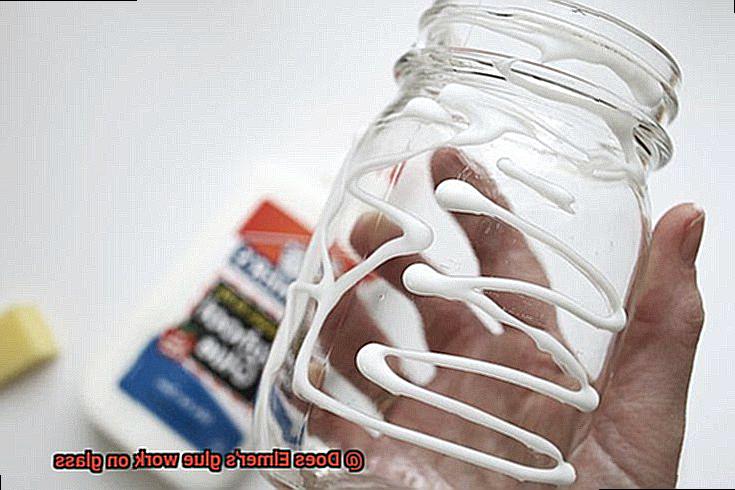
Before delving into the world of glass crafting, let’s explore the challenges you may encounter when using Elmer’s glue on this smooth and non-porous surface.
Firstly, Elmer’s glue wasn’t specifically designed for glass. While it excels at bonding materials like paper, fabric, and wood, it may struggle to form a strong bond on glass surfaces.
Durability is another hurdle. Although Elmer’s glue may initially stick to glass, it may not hold up well over time. Factors such as moisture, heat, or frequent use can weaken or detach the bond entirely. No one wants their beautiful creation falling apart.
Glass surfaces can be finicky too. Fingerprints, oils, and other contaminants can create a barrier between the glue and the glass, making it difficult for them to adhere properly. Therefore, thorough cleaning of the glass is crucial before applying the glue.
Visibility is also a concern. Elmer’s glue dries to a translucent finish, meaning it may be visible on clear glass surfaces. This might not be ideal if you’re aiming for a seamless and invisible bond.
Lastly, if you’re working on a project that requires high strength or load-bearing capabilities, Elmer’s glue may not suffice. Glass items that need to withstand pressure or weight will benefit from stronger adhesives specifically designed for glass bonding.
There are specialized glass adhesives available that offer better adhesion and durability than Elmer’s glue. So if you’re serious about your glass crafts, consider exploring these alternatives for a more reliable bond.
Elmer’s CraftBond Glass Glue
If you’ve been on the hunt for the ultimate glue to conquer your glass projects, your search ends here with Elmer’s CraftBond Glass Glue. This adhesive is a game-changer, specially formulated to bond glass surfaces and become an essential weapon in your crafting arsenal.
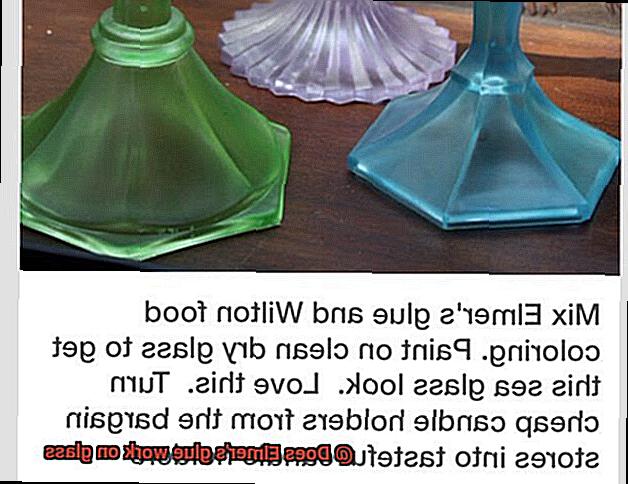
Let’s delve into what sets Elmer’s CraftBond Glass Glue apart from the rest. First and foremost, its quick-drying formula is a game-changer. No longer will you have to wait hours for your glue to dry. With Elmer’s CraftBond Glass Glue, you can dive right into your project, saving valuable time and eliminating frustration.
But it’s not just the speedy drying time that makes this glue shine. Its adhesive properties are top-notch as well. Once cured, Elmer’s CraftBond Glass Glue forms an unyielding bond that can withstand water, heat, and chemicals. So whether you’re creating stunning stained glass designs or fixing a shattered glass item, this glue guarantees a strong hold even under immense pressure.
Elmer’s CraftBond Glass Glue isn’t limited to glass alone. It works wonders on ceramics, porcelain, and jewelry findings too. Talk about versatility. No matter what kind of craft project you’re tackling, this glue has got you covered.
Now, let’s talk technique. For optimal results, ensure that your glass surfaces are clean and free from dirt or oil before applying the glue. Apply a thin layer of Elmer’s CraftBond Glass Glue to one surface and firmly press the pieces together. Hold them in place for a few minutes to allow the glue to set, and voila. You’re well on your way to creating something extraordinary.
Remember, for the strongest bond possible, it’s recommended to let the glue cure for 24 hours before subjecting it to any stress or strain. This ensures that your masterpiece stays intact for years to come.
Advantages of Using CraftBond Glass Glue
Look no further than CraftBond Glass Glue. This incredible adhesive offers a range of advantages that will make your crafting and DIY projects a breeze.
CraftBond Glass Glue boasts a strong and durable bond that is specifically designed for glass surfaces. Say goodbye to broken pieces and hello to a lasting bond that can withstand regular use and handling. This glue means business.
But it’s not just the strength of the bond that sets CraftBond Glass Glue apart. Its clear and transparent formula ensures a flawless finish every time. Unlike other glues that leave behind visible residue or marks, this glue dries completely clear, making it perfect for projects where aesthetics are important. Your glass creations will look flawless.
CraftBond Glass Glue is also incredibly versatile. Not only does it work well for glass-to-glass bonding, but it also bonds seamlessly with other materials such as metal, ceramic, and plastic. This opens up a world of possibilities for your craft and repair projects. Let your imagination run wild.
Time is precious, especially when you’re in the middle of a creative frenzy. That’s why CraftBond Glass Glue features a quick-drying formula. No more waiting around for hours for your glue to set. With this glue, you can continue with your project without any unnecessary delays. Get back to creating in no time.
Water resistance is another advantage of CraftBond Glass Glue. Once dried, the bond created by this glue remains strong even when exposed to moisture or water. So whether you’re working on indoor or outdoor projects, this glue has got you covered.
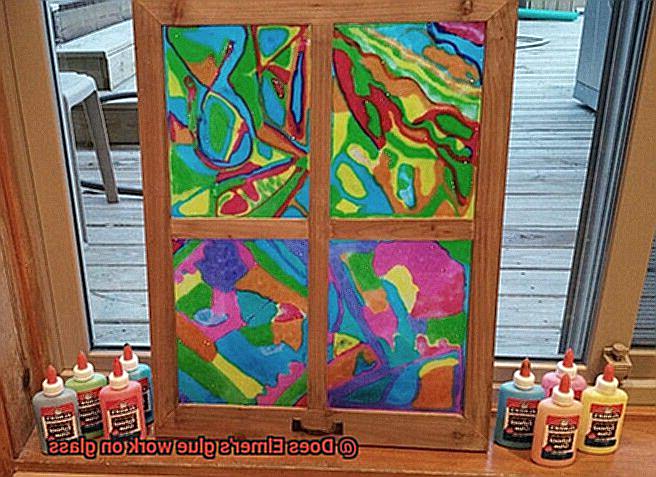
Worried about safety? Don’t be. CraftBond Glass Glue is non-toxic and low odor, making it safe for both adults and children to use. You can work on your projects with peace of mind, knowing that you’re using a glue that doesn’t contain harmful chemicals. Create and bond without any worries.
Application is a breeze with CraftBond Glass Glue. It comes in a convenient applicator bottle or tube, allowing for precise control and even application. No more messy and wasteful gluing. Just easy and efficient bonding.
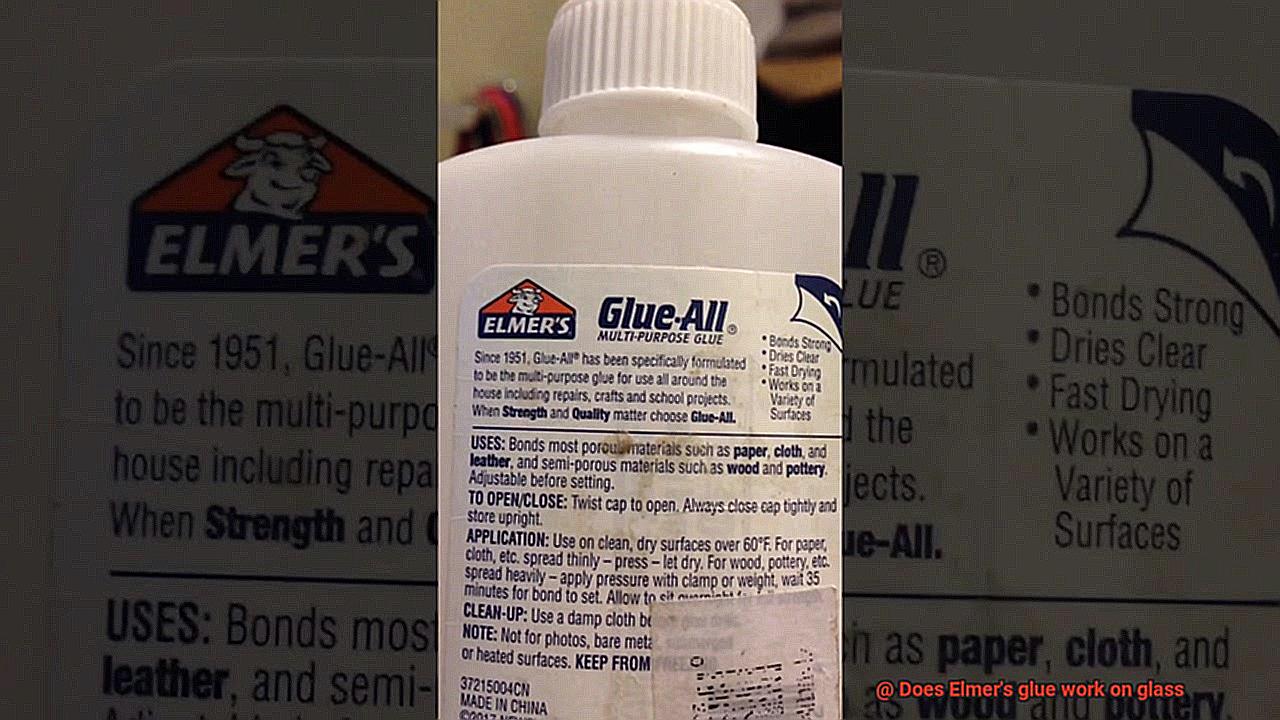
Preparing the Glass Surface for Adhesion
We have the secret weapon you need – Elmer’s CraftBond Glass Glue. But before you embark on your creative journey, let’s unlock the key to achieving a robust and enduring bond between the glue and the glass. And that key is none other than proper preparation of the glass surface.
Imagine this – after hours of meticulously designing and arranging your glass pieces, they come crashing down because you didn’t prepare the surface adequately. Don’t let that be your story. Follow these simple steps to ensure your glass creations remain intact:
Step 1: Clean, clean, clean.
Before applying any glue, make sure your glass surface is squeaky clean. Dust, dirt, and grease act as barriers between the glue and the glass, undermining the strength of the bond. Grab a mild detergent or glass cleaner and scrub away. Rinse thoroughly and ensure complete drying before moving forward.
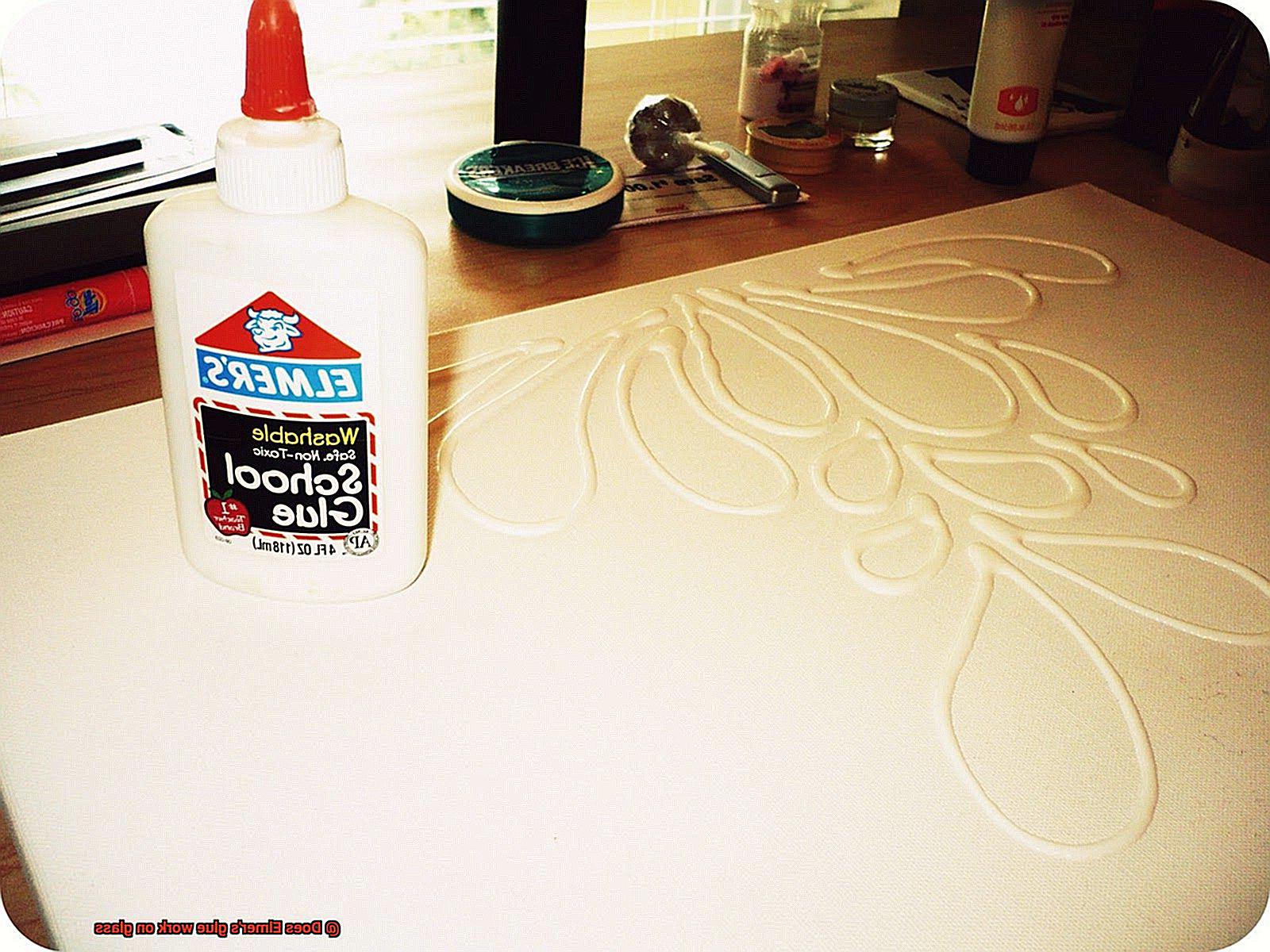
Step 2: Roughen it up.
To create an expanded surface area for optimal adhesion, gently sand the glass with fine-grit sandpaper. Remember, be delicate. We want a textured surface, not scratches or damage. The goal is to achieve a subtly roughened texture on the glass surface.
Step 3: Clean (again).
After sanding, it’s crucial to clean the glass once more to eliminate any dust or debris generated during the process. Employ a lint-free cloth or paper towel along with rubbing alcohol for a final wipe-down. Ensure absolute dryness before proceeding.
Step 4: Primer, anyone?
If you’re working with non-porous glass surfaces, consider applying a primer – a game-changer in enhancing adhesion. A primer creates a bond-enhancing layer between the glue and the glass, revolutionizing the strength of the bond. Look for primers specifically designed for glass surfaces and follow the manufacturer’s instructions diligently, including application and drying times.
Step 5: Glue it up.
Now that your glass surface is primed and ready, it’s time to introduce the star of the show – Elmer’s CraftBond Glass Glue. Use a brush or applicator to apply a thin, even layer of glue onto the desired areas of the glass. Remember, less is more. Excessive glue application can lead to messy and uneven results. Allow the glue to dry completely according to the manufacturer’s instructions before handling or moving the glass.
You’re now equipped to unleash your creativity with confidence, knowing that your glass pieces will stay intact thanks to the robust bond created by Elmer’s CraftBond Glass Glue.
Testing the Bond Strength on a Small Area First
When it comes to bonding glass surfaces, finding the right adhesive is crucial for a strong and lasting bond. Elmer’s glue is a popular choice, but before embarking on a large project or repair, it is essential to test the bond strength on a small area first. This article explores why this step is important and provides a step-by-step guide on conducting the test for optimal results.
Importance of Testing:
- Compatibility Assessment: Different types of glass, such as tempered or laminated glass, have varying properties. By testing the bond strength on a small area, you can determine if Elmer’s glue is compatible with the specific glass type you are working with.
- Purpose Evaluation: Glass bonding serves various purposes, from artistic creations to practical repairs. Testing the bond strength helps evaluate if Elmer’s glue can withstand the intended use and hold up over time.
- Reliability and Resource Savings: Conducting a small-scale test ensures that your larger project or repair will have a reliable and durable bond. This prevents potential failures and saves you time, effort, and resources.
Conducting the Test:
- Surface Preparation: Thoroughly clean the small area of glass you will be testing to eliminate dirt, oils, or residues that could affect the bond strength.
- Glue Application: Using a brush or toothpick, evenly spread a small amount of Elmer’s glue on the cleaned area, ensuring complete coverage.
- Drying Time: Follow the manufacturer’s instructions for drying time, which can range from minutes to hours depending on the type of Elmer’s glue used.
- Bond Strength Test: Once dry, gently try to separate the glued area from the glass using slight pressure or by attempting to peel off the dried glue with a fingernail or plastic tool.
- Result Evaluation: If the bond remains strong and does not easily come off, Elmer’s glue is suitable for bonding glass surfaces. However, if the bond is weak and the glue peels off easily, consider alternative adhesives.
- Also Read: Can you use Elmer’s glue as a sealant?
Conclusion
Elmer’s glue is a versatile adhesive that has been trusted by many for various crafting and DIY projects.
However, when it comes to using it on glass, the results may not be as reliable. While Elmer’s glue can adhere to glass surfaces to some extent, its bond may not be as strong or long-lasting as other specialized glues designed specifically for glass.
The smooth and non-porous nature of glass makes it challenging for most adhesives, including Elmer’s glue, to form a secure grip. Additionally, factors such as moisture, temperature changes, and stress can further weaken the bond over time.
So, if you’re looking for a foolproof solution to attach items permanently to glass or join two glass pieces together, it’s advisable to opt for glues explicitly formulated for glass bonding.

